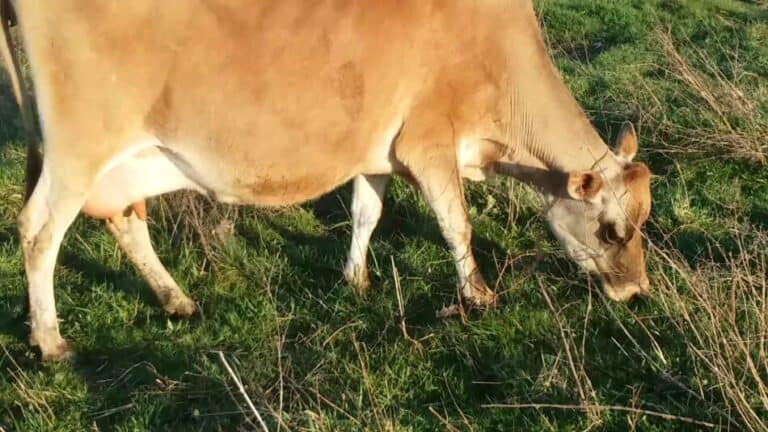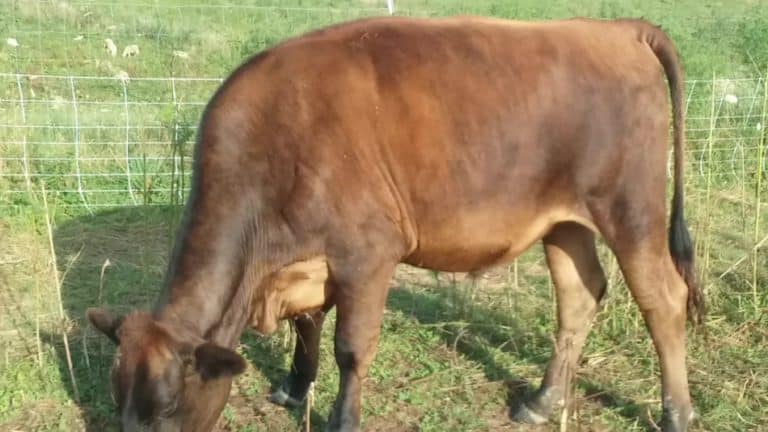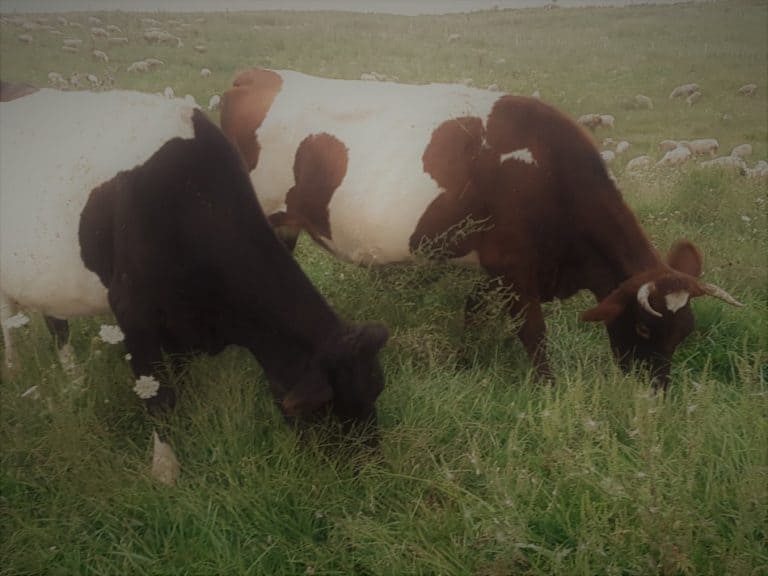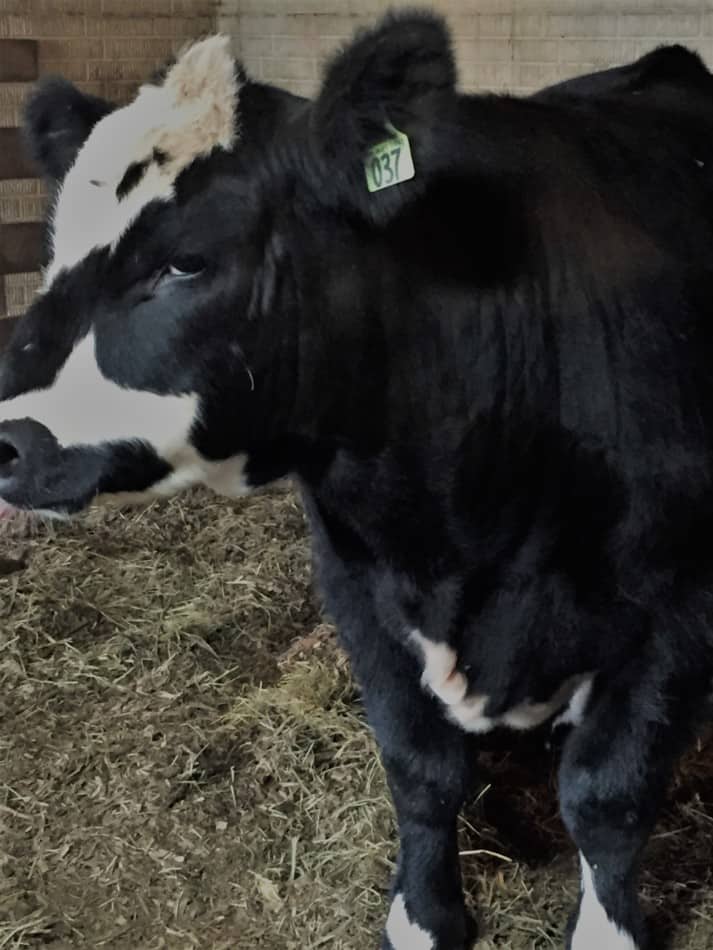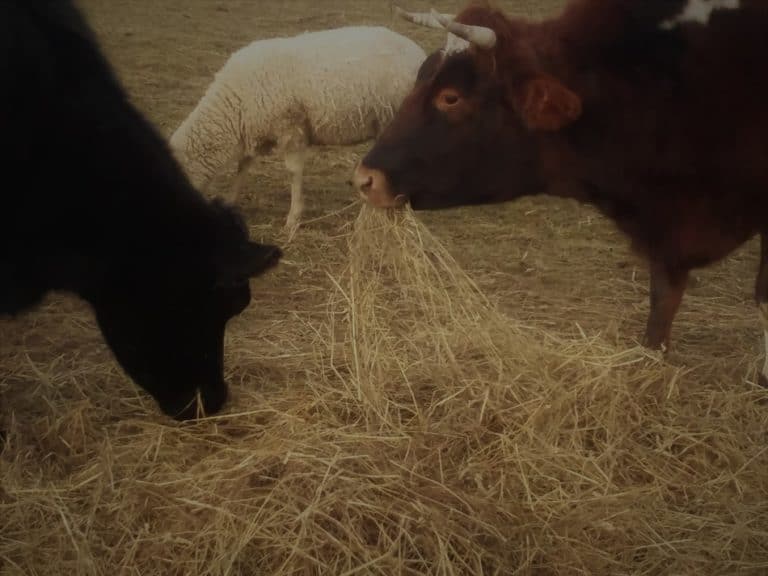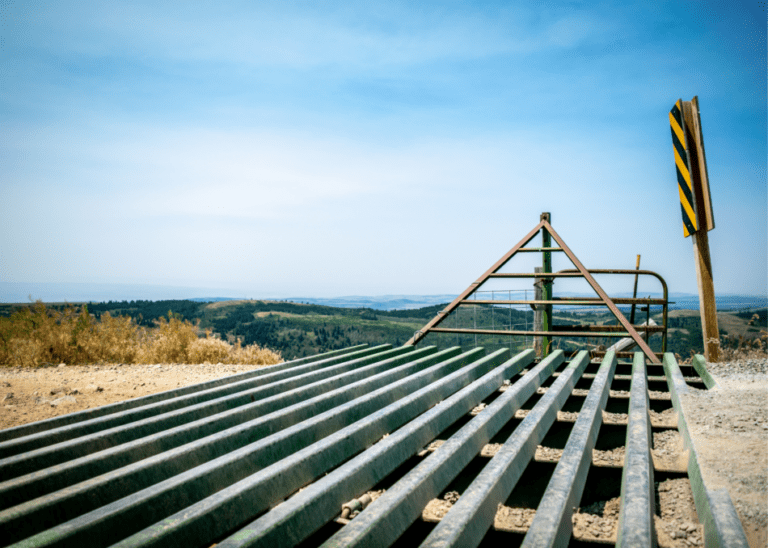Should You Raise Cattle? 7 Things to consider
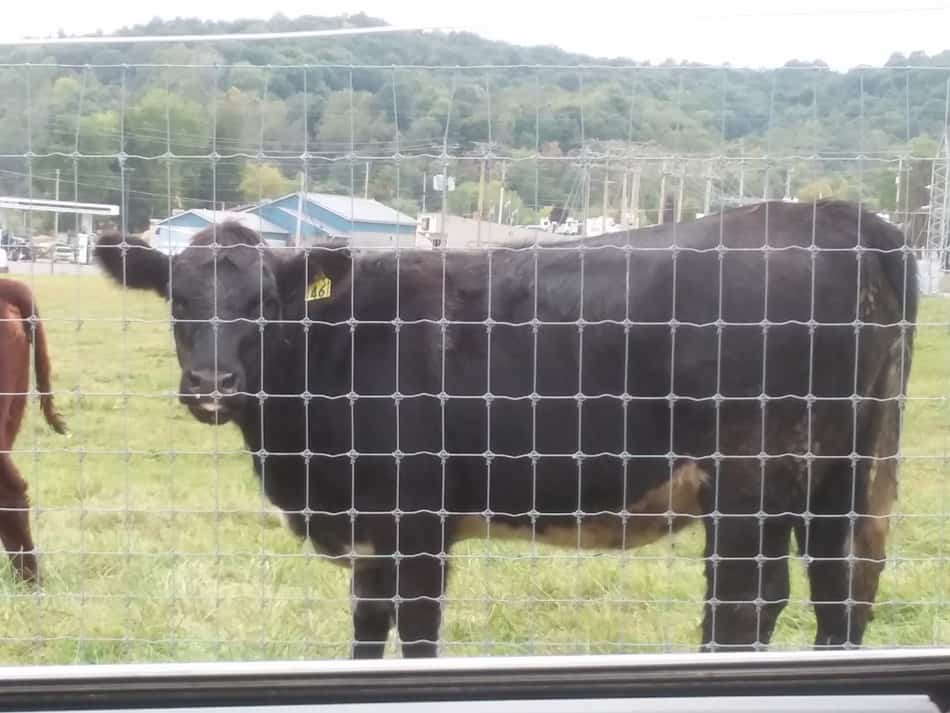
Thinking about getting into raising your own cattle? Super! Cattle are wonderful animals.
A farm, especially our farm, just isn’t complete with out a few cows. But how do you know if cattle are a good idea for you?
Before deciding to raise cattle, you should know the upfront costs, the ongoing costs, where they are going to live, what you are going to feed them and how and when you are going to sell them.
Cattle are a big investment, in both time and money, let’s just start with that right out of the gate.
So why do so many people that are interested in raising their own animals want cattle? To me, that’s easy. Nothing says you are competent with livestock like successfully raising cattle.
However, the big question is: are cattle a good fit for your situation, your management style and available land? Let’s look into this more deeply.
Is Raising Your Own Beef Worth It? will go over the budget for raising your own beef and putting it in your freezer.
Upfront costs of raising cattle are high
You have multiple options of how you could get into raising cattle, stockers, brood cows, or even bottle babies if you want to start with a small project.
No matter how you look at it you need to be able to put up all the cash up front.
You will need to buy the animals and the feed for them until they reach marketable weight. That means no money is coming back to you for a while.
Don’t forget to include the cost of fencing, some sort of shelter and routine care, like deworming and vet calls.
If you have another source of income that is paying for the cattle until you can turn your small herd into a profitable business, no worries.
Using money from your job or another business would be a great way to start into cattle.
If you do not have another source of off farm income that will foot the bills until the cattle start to pay for themselves, run these numbers very carefully!
You really need to be rock solid on figuring out the budget for the next few years.
Update: cattle prices are up significantly this year (2023), both brood cows as well as feeder steers. Definitely run some numbers before getting started!
Buying Your Starter Herd Of Cattle will show you the things you’ll need to have figured out to ensure that the cattle you buy will work well for you and your land.
Have enough land for your cattle
The good news is you do not have to own large acreages for raising cattle, but you do need some land.
Greg Judy talks extensively about using rented land for cattle and grazing year round. Check him out at Green Pastures Farm .
The exact number of acres per cow will vary quite a bit depending upon where in the country you live.
I’ll use numbers for my home state, Ohio, but you’ll have to figure out the ones for your area.
We figure 2 acres for the first cow and then 1 acre for each cow after that.
Be aware that acreage is for feeding the cow on grass for the growing months of the year, so you will still need winter hay.
If you set stock, keep the cattle in one pasture the whole time, you will get less cattle fed per acre. Way less cattle per acre, actually.
Just turning your cattle into one pasture and leaving them the whole summer will work, but if you want the most growth of the pasture, you need to manage your herd differently.
You will have many times more grass for your herd for the year if you rotate them through the pasture. Even if you just divide the land into quarters, that is a start.
Moving the cattle will grow the most grass
Ideally, you would give your cattle enough grass for them to eat in one day, or even a half day if you are willing to move them twice per day.
Then keep them off of the eaten grass until it regrows and graze it again, and repeat. You will need to experiment with the paddock size at first, but it’ll be clear after a few times.
How do you make this moving to new grass stuff happen? Easy: portable electric fencing.
Cattle, once trained to the fence, will be kept in with one hot (electrified) wire. This set up is easy and quick to move.
It also conforms to oddly shaped grazing areas and challenging topography.
Your cattle need a secure fence
One of the things I like best about cattle is that they are pretty easy to keep in a single strand electric fence. That is very economical cattle fence!
For mixed species grazing-no deal, but for just cattle, works great.
Of course you may prefer woven wire or high tensile, both popular choices around here for cattle farmers.
Look at the picture above for a beautiful example of a woven wire fence! This particular fence is taller than the normal 48″ size but still has the extra precaution of a strand of electric around the top.
Be aware that if the cattle can reach the top of the fence they will push it down and ruin your fence. The easy fix here is to have the top of the fence, or the whole thing in the case of high tensile, electrified.
Even in Ohio, we still see a good amount of barbed wire, I’m not a fan of barbed wire. Please don’t use it. Go with electric instead.
If you don’t have power at the pasture you need to fence, there are solar powered fencers available and ones that operate off of a battery.
Minimal cattle equipment is needed
Even if you run a shoe string budget style operation, you will still need some basics.
Since cattle are strong, all of the equipment to hold them or to use around them has to be substantially built. Gates need to be strong, feeders need to be tough.
For some reason, pigs seem to be the only animal to get the reputation of being likely to knock things over or beat on equipment. While that is true about the pigs, it’s also true about your cattle.
Even mild mannered cattle push, shove and rub around on anything that is handy.
When cattle are stressed or scared, they can really put some power into knocking around you and your equipment.
Don’t have slapped together or scantily built gates (or whatever) as the only thing keeping a hyped up cow or steer off of you.
Cheap equipment will result in you or your cattle getting hurt.
While you don’t need all of the latest and greatest corral equipment, you will need to have at least a minimal set up to catch and hold your cattle.
The bare minimum I would want is a pen that all of the cattle can fit into and then another connected pen to sort off into.
Both need to be sturdy in order to keep you and the stock safe.
You need off season feed for your herd
You’ll need to plan for the slow or non growing season for your area.
Like it or not, no matter where you live there are good growing times of the year and not so good times. For us it’s the winter, no grass growing, cattle still eating.
We handle this yearly shortage with purchased hay. Look around online and in the local market reports for the prices that apply to your area.
Your cattle will need 2 tons of hay per adult, if you live in an area that has winters like we do.

Many farmers also use silage or haylage (both fermented forages, haylage is in bale form) to feed their cattle when forage is not available.
Our cattle always love haylage when we buy it. Be aware that not all animals can eat haylage, so if you have other livestock make sure all the animals can safely eat the haylage or just stick to feeding hay.
Not sure how to figure this out? An unbelievable amount of information is online.
Ask neighbors or at the local farm store, most people are happy to help out a new cattle enthusiast. Or call the local extension service office.
Your herd will need time to generate a profit
This is going to be a tough section to read. Especially tough for anyone planning to sell at regular auction prices.
Do the math on these cattle and look at last year’s numbers as well. Cattle prices change frequently.
Starting with bred cows and selling weaned calves
This is the quickest possible return using brood cows. You will not see any money coming back in from your bred cattle until the calves are sold after weaning.
This would mean calves that were born in the spring get sold when they are 6-8 months old, depending upon when they were born.
For example: if you bought the cows on January 1st, you would get calves born in the spring and sell weaned calves in the late fall. This would be almost a year until you see any money from your herd.
The first year you would have bought the bred cow for $1,000 and sold the calf for $500-700. Do the math for your area.
Check out my article Reading A Cattle Market Report if you’re new or just need a refresher.
Either way run the numbers! Don’t forget to include rent for the land and hay costs at 2 tons per head per year.
Starting with bred cows and selling finished steers
Starting with the same cattle as above, calving in the spring, you would keep these calves and feed them out until they get to market weight.
This would take another year. So the calf born this spring will sell as a market steer next fall.
This is the fastest growth possible of the steer, all forage diets will require more time for the steer to finish.
You would need to feed a substantial amount of grain (and deal with the resulting health consequences to the steer) to get the steer to finishing weight this quickly.
If you want to keep the calves and grow them out on pasture or hay only, the growth will be slower and take 2-2.5 years to finish out a steer.
This is a slower rate of growth, but actually the normal rate of growth for cattle.
For this example the bred cow cost $1,000 plus 2 tons of hay per winter per adult, the steer will be an adult eater the first winter.
You may get $1 per pound for a well finished beefy steer at 1,000 pounds live weight. So you could get $1,000 for the finished steer at 18 or so months old.
Be sure to include hay for him and his mom and any grain he ate.
Important note: grass finished beef is doable and being done by many.
It does take longer than grain fed, but that is because grain fed is unnaturally accelerated growth compared to the natural pace of forage based growth.
A great example of grass fed and finished beef is Greg Judy, check him out.
Raising feeder or stocker cattle is doable
These are cattle that you would buy weaned or as yearlings and finish them out to market weight at your farm.
Generally, these cattle would be yours for just about a year or a little less than a year. This means you could see the profit from feeders in less than a year.
Remember when you are figuring the prices you will pay you need to multiply the price by the pounds of the steer. For example, $1.30 per pound multiplied by 550 pounds equals $715.00 to get the steer.
The price per pound will vary widely with breed and condition of the steer.
Always buy a healthy animal, there are no deals to be had on animals in poor health. They will cost you more to raise, buy a few good ones.
The advantage to feeders is they are no longer needing their moms so you are just feeding the animal that is growing and that you will be selling.
With feeders, you paid someone else to handle the care of the calf from birth until weaning and keep, manage and feed the brood cattle.
A second advantage to feeders is that you could schedule your purchasing and selling so that you had some cattle free time during the year.
Maybe you want to take a longer vacation and not have to worry about getting someone to take care of your feeders, or you just want feeders when you have grass.
They eat the pasture, then they are sold in the fall.
Direct selling your cattle to customers
Direct selling is an alternative to selling at the local auction and will get you more money.
You’ll have the customer to coordinate with and get money from and direct selling will require more organization on your part.
If direct selling is part of your plan get a mentor who is currently direct selling and do a ton of research.
We do not direct sell, but I have some places for you to start your search and get going on a plan: Small Farm Nation is a great place to start, I love the podcast.
Another good one is John Suscovich of Small Farm Marketing Solutions, who has a YouTube channel and a podcast.
Polyface Farm has an entire set of DVD’s, called the Salatin Semester, showing all of their enterprises, including cattle, and how to implement them on your land.
Plan routine care for your cattle
Your cattle will need care of some sort. Even if it is just deworming, plan some money in your budget for this expense.
Hopefully this expense will be small, but it needs to be included anyway.
If you get cattle from a herd that does not deworm or need other veterinary care as a regular part of their life, good choice!
Getting high quality breeding stock is always a good idea to start your herd!
However, those cattle are adapted to their home farm, not yours. Your cattle will adapt and the ones that don’t should be sold, but they are not there yet.
Chances are you will need to do some care in the first few years until they get used to your management and you get used to managing cattle. Plan in a little cushion to your budget.
A.I. as an overlooked expense
An easy one to overlook is Artificial Insemination (A.I.) technician services. Not keeping a bull around can make some sense. We don’t have a bull, haven’t for years actually.
You still need the cows bred. Wondering About A.I. For Your Small Herd? goes over the things you need to know to get your cows bred artificially.
The A.I. techs can do great work for you and give you access to genetics you would not be able to get on your own, including choosing a different bull for each cow if you desire.
No matter how you work it, this needs paid for as well.
Conclusion
Hopefully, I didn’t scare you off of cattle. That was not my intention at all! I just want you to realize what you are getting into.
Cattle are not all sunshine and daisies, not at all! But they are wonderful animals that will enrich your life and the lives of others if they are appropriate for your small farm operation.
But you need numbers and real information to decide for yourself.
I hate it when I’m looking for information on something business wise and there are no numbers to use for a budget, even though the information is about a business so it is all about numbers!
Or I get to thinking about an interview or something I read and there are huge holes are left in the story!
How can I plan without the information? I can’t and neither can you.
Get the information, do the math, talk to some people who are raising cattle in your area. Good luck!
